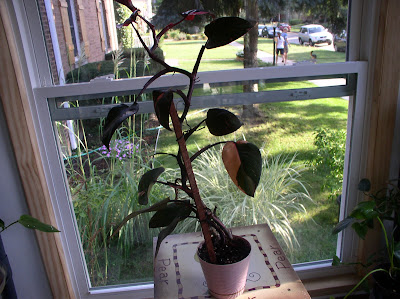Philodendron Pink Princess is an Australian hybrid involving Philodendron erubescens. This fabulous plant was originally cultivated in Australia and is an ideal house plant if your climate is not warm enough for it to grow outdoors.
Philodendron Pink Princess is an Australian hybrid involving Philodendron erubescens. This fabulous plant was originally cultivated in Australia and is an ideal house plant if your climate is not warm enough for it to grow outdoors.
IDENTIFY PHILODENDRON PINK PRINCESS
Philodendron Pink Princess is a semi-climbing plant (when kept in a pot) with streaked leaves with gorgeous shades of hot pink, burgundy, lavender, dark purple, green and cream. Plants with black leaves are rare in nature, that is why it is so unique. The young leaves emerge as a dark olive-green with white variegation, maturing to a deep black with bright pink spots. Hence the variegation is highly visible.
Once mature the leaves generally turn deep red to green, vines, however, remain dark maroon throughout the growth cycle. For best coloration, this Philodendron must be kept small about the size of an indoor Pothos. Pink Princess is a beautiful staple of every philodendron collection. Though this plant is actually a climbing variety it can maintain its bushy form by simply trimming it back once or twice per year. These are very healthy tropical plants with well-established root systems.
PHILODENDRON PINK PRINCESS CARE AND CULTURE
Cultural information should only be used as a guide, and should be to be adapted to suit you. Your physical location; where you grow your plants, how much time you have to devote to their care, and many other factors, will need to be taken into account. Only then can you decide on the cultural methods that best suit you and your plants.
Light:
Philodendron Pink Princess prefer indirect or filtered sunlight but will tolerate low light. They need to be shaded from direct sun. Some light morning sun is usually ok. Provide good light for maximum variegation but no direct sunlight. If the plant will get too much light, the leaves will begin to turn yellow. When provided good lighting it should eventually produce more pink as it matures - the pink variegation always comes with the maturity of the plant.
Temperature:
The ideal temperature for this philodendron is between 18-26°C during the day, and around 15°C at night. If grown outside, night temperatures down to around 15°C and day temperatures around 30°C are ideal. If grown indoors, the lower temperature can often be reduced further, as the plant is protected from extreme cold and frost.
Substrate and growing media:
Philodendron Pink Princess is grown in pots need well-drained pots that aren't too large for the plants. They do best when their roots are slightly cramped, but not too tightly packed that they form a tight ball of roots. They will grow in 100% sphagnum peat moss. Soilless mixtures such as peat-vermiculite or peat-perlite are also satisfactory. They'll flourish in rich, moist soil that contains a good supply of organic matter. It appreciates having something to climb up as it grows (such as a post in the pot), or it makes a beautiful hanging basket specimen.
Watering ad humidity:
High humidity is ideal for best growth, but this philodendrons tolerate the low level of humidity in most homes. Water frequently enough to keep the soil evenly moist, but not soggy. Never let the plants stand in water and don't let the substrate dry out completely. Droopy leaves can mean that the plant is getting too much or not enough water. But the leaves recover quickly when you correct the watering schedule.
Newly potted plants need to be carefully watered. Allow the soil to become almost dry before watering. Follow this procedure until the roots have grown into the new soil, after which the soil can be kept more evenly moist. It's especially beneficial to newly planted plants to spray their leaves two or three times a day.
In home, plant diseases are very rarely a problem. Too much or too little water plus insects and mites are the main problems. Root rot usually results from a soil mix that does not drain quickly or overly frequent watering. Yellowing of lower leaves and the death of the growing tips can be caused by too little light or overwatering.
Fertilizer:
Fertilize the plant regularly with a dilute water soluble houseplant fertilizer, or use a time-release fertilizer. Water the plant with the fertilizer monthly in spring and summer and every six to eight weeks in fall and winter. Slow growth and small leaf size is the plant’s way of telling you that it isn’t getting enough fertilizer. Pale new leaves usually indicate that the plant isn’t getting enough calcium and magnesium, which are essential micro-nutrients for philodendrons. Too much fertilizer can cause tips of leaves to curl and brown.

















COMMENTS